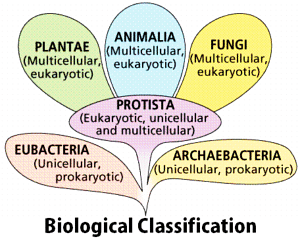Main component of the cell wall of fungi is
- cellulose
- Pectin
- chitin
- dextrin
The Correct Option is C
Solution and Explanation
Fungal Cell Wall Composition
The cell wall of fungi is a crucial structural component that provides rigidity and protection to the cell. Unlike plant cells, which have cell walls made of cellulose, fungal cell walls are primarily composed of two key substances: **chitin** and **fungal cellulose**. In addition to these, fungal cell walls may also contain other polysaccharides, proteins, lipids, and various other substances, each contributing to the integrity and function of the cell wall.
Chitin in Fungal Cell Walls
Chitin is the primary component in the cell walls of most fungi. It is a nitrogen-containing polysaccharide made up of repeating units of **N-acetylglucosamine**, a derivative of glucose. Chitin provides structural support and is resistant to many environmental stresses, making it an essential part of the fungal cell wall.
Cellulose in Fungal Cell Walls
In some fungi, **cellulose** is also present in the cell wall, either alone or alongside chitin. Cellulose is another polysaccharide made up of glucose molecules. While not as common in fungi as chitin, cellulose can be found in certain fungal species, such as the **oomycetes** (e.g., *Phytophthora*), which are classified as water molds. These organisms often have a combination of chitin and cellulose in their cell walls, providing additional strength and flexibility.
Other Components of the Fungal Cell Wall
In addition to chitin and cellulose, fungal cell walls contain a variety of other substances, including:
- Polysaccharides: Other types of polysaccharides like glucans and mannans may be present, contributing to the overall structure and stability of the cell wall.
- Proteins: Structural proteins, such as hydrophobins, play a role in cell wall assembly and protection against environmental threats.
- Lipids: Lipids in the fungal cell wall help maintain its integrity and serve as a barrier against certain chemical and physical stressors.
- Other substances: Various other minor components may also be involved in maintaining the cell wall’s strength, flexibility, and function, depending on the fungal species.
Conclusion
The composition of the fungal cell wall varies between species, but it is generally made up of chitin, cellulose (in some species), and various other molecules. The presence of these components allows fungi to adapt to a wide range of environments and play important roles in ecosystems as decomposers, pathogens, and symbionts.
Top Questions on biological classification
- Study the following and choose the incorrect combinations:
I. Phylum: Porifera, Special cells: Lasso cells, Example: Spongilla
II. Phylum: Cnidaria, Special cells: Stinging cells, Example: Hydra
III. Phylum: Ctenophora, Special cells: Choanocytes, Example: Pleurobrachia
IV. Phylum: Platyhelminthes, Special cells: Flame cells, Example: Fasciola- TS EAMCET - 2025
- Zoology
- biological classification
- Study the following and choose the correct combinations:

- TS EAMCET - 2025
- Zoology
- biological classification
- ICBN refers to?
- TS EAMCET - 2025
- Biology
- biological classification
- Which of the following microorganisms is used in the production of curd from milk?
- MHT CET - 2025
- Biology
- biological classification
- In a DNA molecule, which of the following base-pairings is correct?
- MHT CET - 2025
- Biology
- biological classification
Questions Asked in NEET exam
- Two identical point masses P and Q, suspended from two separate massless springs of spring constants \(k_1\) and \(k_2\), respectively, oscillate vertically. If their maximum velocities are the same, the ratio of the amplitude of P to the amplitude of Q is :
- NEET (UG) - 2025
- Waves and Oscillations
A sphere of radius R is cut from a larger solid sphere of radius 2R as shown in the figure. The ratio of the moment of inertia of the smaller sphere to that of the rest part of the sphere about the Y-axis is :

- NEET (UG) - 2025
- Moment Of Inertia
- A microscope has an objective of focal length \(f_o = 2\) cm and an eyepiece of focal length \(f_e = 4\) cm. The tube length of the microscope is \(L = 40\) cm. If the distance of distinct vision of eye is \(D = 25\) cm, the magnification in the microscope is:
- NEET (UG) - 2025
- Optical Instruments
AB is a part of an electrical circuit (see figure). The potential difference \(V_A - V_B\), at the instant when current \(i = 2\) A and is increasing at a rate of 1 amp/second is:

- NEET (UG) - 2025
- Electromagnetic Induction and Inductance
- Twins are born to a family that lives next door to you. The twins are a boy and a girl. Which of the following must be true?
- NEET (UG) - 2025
- Genetics
Concepts Used:
Biological Classification
The process of grouping living organisms into categories is called biological classification. The most modern 5-kingdom classification was put ahead by an eminent scientist R.H.Whittaker. The five-kingdom classification is based on the criteria like cell structure, mode of nutrition, body form, and reproduction. One of the most important characteristics of this system is that it follows the evolutionary sequence of living organisms. The organisms are classified into distinct taxa or levels like Kingdom, Phylum, Division, Class, Order, Family, Genus, and Species. The 5 kingdoms are as follows:
